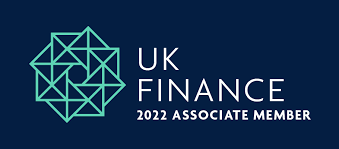
Invoice Finance: The Ideal Cashflow Solution for SMEs With Late-Paying Customers
Content
Late-paying customers continue to be a significant challenge for UK SMEs in 2025. According to recent reports, 77% of SMEs are owed money by late-paying customers. Companies with 10 or more employees are owed £18k-£22K in unpaid invoices. Over half of these invoices are overdue by more than 30 days, and 24% are delayed by up to 60 days. This condition is a growing trend, as 45% of SMEs saw an increase in late payments over the past year.
Without an effective strategy to enforce timely payments, over 50% of SMEs suffering late payments claim they let invoices go unpaid just to avoid the time and cost of chasing clients. Yet, a readily accessible, cost-effective, and easy-to-manage business lending solution is available to overcome the cashflow gaps and collection challenges caused by this disruptive trend.
Invoice finance is a specialised business lending solution which enables SMEs to unlock the cash tied up in unpaid invoices and maintain steady cashflow despite customer delays.
This article examines the nature of late payments, their potentially devastating impact on business continuity, and the benefits of a proven business lending solution in alleviating the financial stress of payment delays and ensuring long-term success.
The nature of late payments
Late payments cost SMEs an average of £22,000 annually and 56 million hours of productivity across the economy. Consequently, many businesses without an effective business lending solution struggle to pay suppliers on time, meet payroll obligations, invest in growth, and maintain healthy profit margins. Late payments aren’t just an inconvenience—they can be a serious threat to business continuity.
While there are some government initiatives to address the issue—such as the Prompt Payment Code and late payment interest penalties—SMEs still bear the brunt of the problem.
The potentially devastating effect on business continuity
Cashflow is the lifeblood of a business – most SMEs rely on steady cashflow to operate effectively. Unlike larger corporations with significant financial reserves or access to traditional business lending with substantial credit lines, most SMEs operate with tighter capital constraints and limited credit options. They depend on consistent cashflow to cover day-to-day expenses, invest in efficiencies, or support competitive advantages such as marketing initiatives. Continuous interruptions to cashflow can quickly lead to financial strain, hinder growth, or even threaten a business’s survival.
The uncertainty caused by unpredictable income also undermines strategic planning and investor confidence, putting the long-term stability of the business at risk. Ultimately, even one late-paying client can threaten the survival of a cash-sensitive SME.
How to overcome cashflow instability
So, how do undercapitalised SMEs overcome cashflow instability? For businesses that regularly invoice creditworthy customers, the best solution is a business lending option that provides access to capital without incurring debt or diluting equity. An even better solution would also include professional accounts receivable management as a cost-free service. An ideal business lending solution would be flexible, easy to qualify for, and deliver fast funding as required.
Invoice finance does all this and more!
What Is Invoice Finance?
Invoice finance, also known as invoice factoring or accounts receivable financing, is a type of business lending that enables companies to receive advance cash based on the value of their outstanding invoices.
Here’s how it works:
- You deliver goods or services and issue an invoice to your customer.
- Instead of waiting 30, 60, or 90+ days for payment, you sell the invoice to a financing company (called a factor).
- The factor advances up to 90% of the invoice value within 24 hours.
- Once your customer pays the invoice, the remaining balance, minus the factor’s fee, is released to you.
The process is quick, scalable, and directly aligned to your revenue stream. Unlike traditional bank loans, invoice finance is a business lending solution that grows with your business activity, not your credit score.
Why invoice finance is an ideal business lending solution
The most significant benefit is clear: fast access to cash. SMEs no longer have to wait weeks or months to receive payment. With invoice finance, you get working capital when you issue the invoice—so you can keep your operations running smoothly.
However, invoice financing provides many more advantages, making it the ideal business lending solution to overcome the disruptive challenges of late payments:
More Flexible Than Traditional Loans: Banks typically require lengthy applications, collateral, and strong credit scores. Approval can take weeks and often comes with rigid repayment terms. Invoice finance, by contrast, is based on your receivables, making it more accessible to SMEs with limited assets or a short trading history.
Aligns with Business Growth: As your sales increase, so does the value of your invoices and the funding you can access. This makes invoice finance an ideal business lending solution for growing businesses that need liquidity to take on new contracts or hire more staff.
No Need to Take on Additional Debt: Invoice finance is not a loan, so you’re not adding debt to your balance sheet. Instead, you’re unlocking value from money that’s already owed to you. This preserves your credit rating, does not dilute equity, and avoids the burden of monthly loan repayments.
Support With Credit Control: The best invoice finance providers offer credit control and collections support as part of the service. This can improve your customer payment cycles and reduce your administrative burden, freeing your team to focus on core business activities.
Types of invoice finance
There are two main forms of invoice finance available to UK SMEs:
Invoice Factoring: With factoring, the financier assumes the responsibility of collecting payments from your customers. This can be particularly helpful for smaller businesses that lack in-house credit control teams. However, customers will know that a third party is managing your receivables.
Invoice Discounting: Discounting is a more discreet option. You retain control over the collections process, and your customers remain unaware of the funding arrangement. This option is typically suited to more established SMEs with robust internal financial processes.
Leading providers also offer selective invoice finance, which lets you choose specific invoices to finance, offering even more flexibility.
What to look for in an invoice finance provider
Choosing the right financier is crucial to ensure the best outcome from your business lending facility. Here are some tips for SMEs:
Experience in your industry: Look for providers that understand the unique cashflow challenges of your sector.
Transparent fees: Make sure you understand the cost structure, including any setup, service, or exit fees.
Flexibility: Some providers offer fixed contracts; others operate on a pay-as-you-go basis.
Customer service: A team dedicated to responsive support can make a big difference.
Online access: the best business lending providers are fintech-driven lenders that offer real-time dashboards and reporting tools to help you stay on top of your receivables, transactions, and credit limits.
Conclusion
Late payments are a persistent challenge for UK SMEs, but they don’t have to stall your progress. Invoice finance is the ideal business lending solution to maintain cashflow, fuel growth, and reduce the stress of waiting on customer payments.
By converting outstanding invoices into working capital, SMEs can invest in staff, equipment, or expansion without waiting for customers to pay or taking on unnecessary debt. Whether you’re a growing startup or a well-established SME, invoice finance may be the key to keeping your business moving forward.
Key Takeaways
- According to recent reports, 77% of UK SMEs are owed money by late paying customers.
- Without an effective strategy to enforce timely payments, over 50% of SMEs suffering late payments claim they let invoices go unpaid to avoid the time and cost of chasing clients.
- Continuous interruptions to cashflow can quickly lead to financial strain, hinder growth, or even threaten the survival of the business.
- Invoice finance is a form of business lending that allows companies to receive advanced cash based on the value of their outstanding invoices. It is the ideal business lending solution to maintain cashflow, fuel growth, and reduce the stress of waiting on customer payments.


